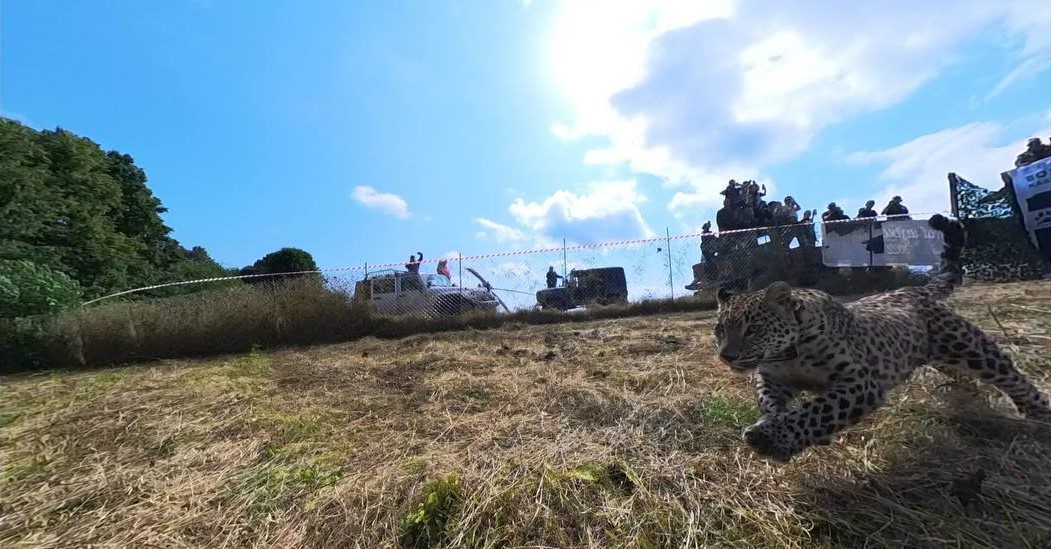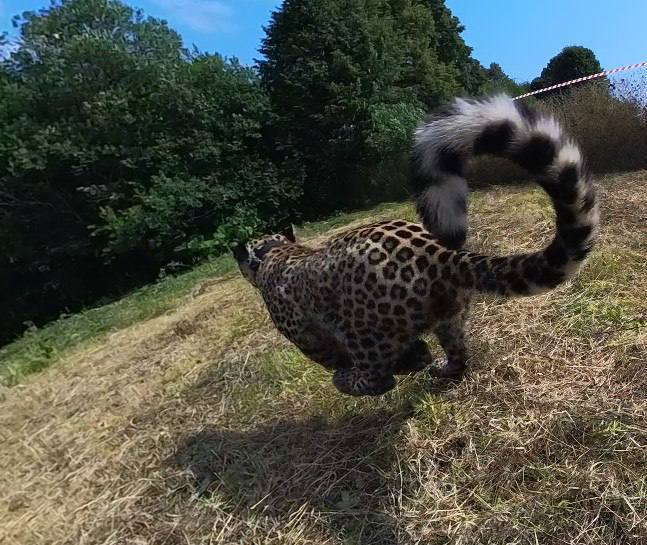
Scientists continue to work on recreating the Caucasian leopard population lost in the last century in Ossetia. On July 22, 2023, another male leopard was released to form a breeding group in the Central Caucasus as part of the state program for the restoration of the Red Book predator. Zoologists regularly obtain data on the movements and life of leopards, and then check their hunting areas.
Exactly one month has passed since the release into the wild of another representative of the main predators of the Caucasus - the Central Asian leopard named Chilmas. He successfully hunts ungulates, uses energy sparingly and avoids encounters with humans. This information is confirmed by zoologists of the protected area complex Ossetia-Alania from the leopard monitoring group in the Caucasus.
The young leopard passes field tests in the mountain forests of Ossetia with excellent marks. In comparison with other males previously released in North Ossetia, during the first month of life in the wild, Chilmas traveled a slightly shorter distance - 73 kilometers versus 100-160 for Leo and Baksan. At the same time, he surprised the zoologists of the field monitoring group with a large prey - an adult male roe deer. Thus, Chilmas becomes a full-fledged link in the ecosystem of the mountain forests of Ossetia and, as we all hope, can become one of the founders of the reviving population. The Caucasian leopard stays away from roads and settlements, is not at all interested in forest edges, does not reduce the distance to anthropogenic objects and places of human activity, and the area that he has colonized to date is about 100 square kilometers.
Other transmitters installed on the collars of Khosta and Laura, which were released into the wild last summer, continue to transmit information about the movements of leopards in the Central Caucasus.
“They chose to settle in different directions. Laura is mastering the western direction - this is the area covering the western part of North Ossetia and the eastern part of Kabardino-Balkaria. And Khosta prefers the eastern direction - the eastern part of Ossetia, Ingushetia and Chechnya. Despite the fact that both of them covered approximately the same distance in a year (Laura - 1882 km, and Khosta - 1942 km), the areas they traversed differed significantly. The area that Khosta has developed is 6,453 sq. m. km, but she has so far explored it in less detail than Laura has explored hers - her plot is more compact, only 1910 sq. m. km, and is better studied by the leopardess. Both of them are successful hunters and are excellent at hunting both small and large prey. At the same time, Khosta still prefers to hunt more often and for small prey (76% versus 24%), and Laura less often, but for large prey - wild boar or roe deer (60% versus 40% of small prey),” say experts from the A.N. Severtsov Institute of Ecology and Evolution of the Russian Academy of Sciences (IEE RAS).
“Leo, released together with Khosta and Laura in 2022, is currently out of reach: his transmitter probably stopped working completely in May. However, during the time he kept us updated on his journey, he hunted no less than 35 times, of which 72% were large game - mainly wild boar, and 28% - small game, such as badgers, raccoon dogs and jackals. During the 10 months that we tracked him, he walked 1,101 km and developed an area of 1,965 square kilometers,” says Jose Antonio Hernandez-Blanco, Candidate of Biological Sciences, senior researcher at the Institute of Economics and Economics of the Russian Academy of Sciences.

“In total, over the years of implementing the project to return the Caucasian leopard to North Ossetia, 8 leopards were released here, and they continue to develop the territory of the Central Caucasus, moving through mountain forests between the republics, where nature is least affected by humans. It is currently unknown for certain whether they have offspring, but this may be due to the secretive lifestyle of these predators and the ability to avoid human attention,” noted Madina Slanova, coordinator of the Caucasian leopard restoration program in the Republic of North Ossetia-Alania.

A reminder that the program for the restoration (reintroduction) of the Central Asian leopard in the Caucasus is being implemented by the Russian Ministry of Natural Resources with the participation of the Sochi National Park, the Caucasus Nature Reserve, the Ossetia-Alania Protected Natural Area complex, the A.N. Severtsov Institute of Ecology and Evolution. RAS, A.K. Tembotov Institute of Ecology of Mountain Territories RAS, the Caspian Institute of Biological Resources FERC RAS, the Moscow Zoo, as well as with the assistance of the International Union for Conservation of Nature (IUCN) and the European Association of Zoos and Aquariums (EAZA). Funding for monitoring and activities for the release of the Central Asian leopard in North Ossetia is carried out with the support of the RusHydro business company, EcoEnergy Group, the World Wide Fund for Nature and the ERA republican operator.
Related materials:
Ministry of Natural Resources and Environment of the Republic of North Ossetia-Alania:
“Scientists continue to work on the return of the Caucasian leopard population lost in the last
century in Ossetia”
Institute of Ecology of Mountain Areas: "Leopard Chilmas. A month after release in the
Central Caucasus"
Kuban news: "First kill: the Sochi leopard Chilmas, released into the wild, began to hunt
successfully"
Greater Asia: "The Central Asian leopard named Chilmas has successfully settled in the
Ossetian forests"
15th region: "The Central Asian leopard named Chilmas has successfully settled in the
Ossetian forests"
Kuban Inform: “The leopard Chilmas, raised in Sochi, has mastered the forests of North
Ossetia in a month”
